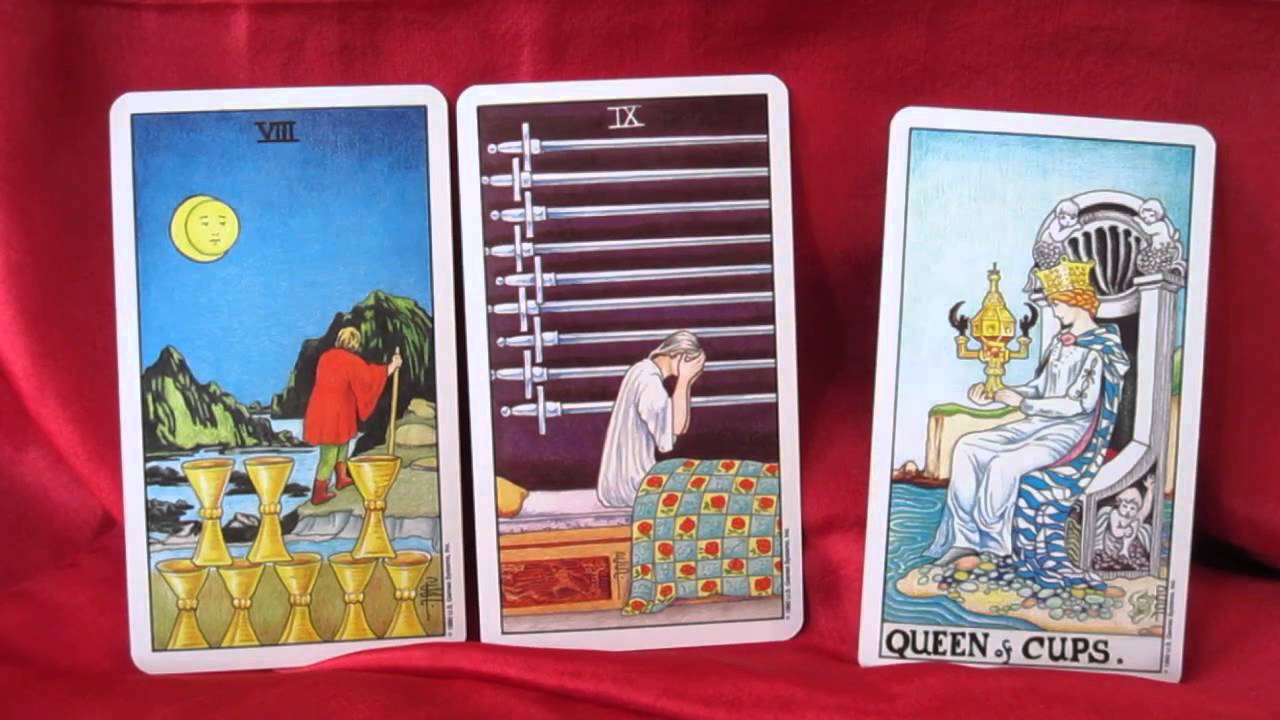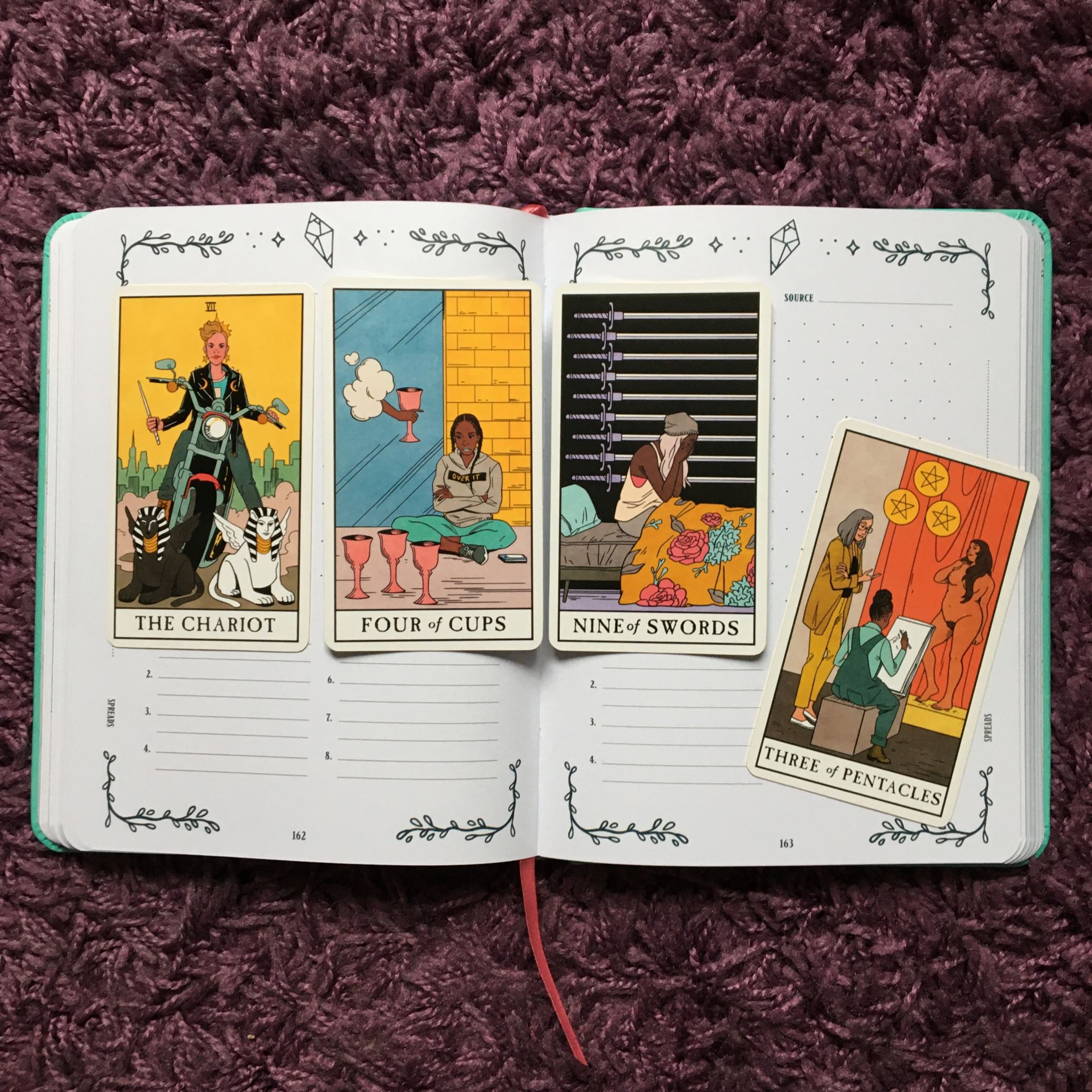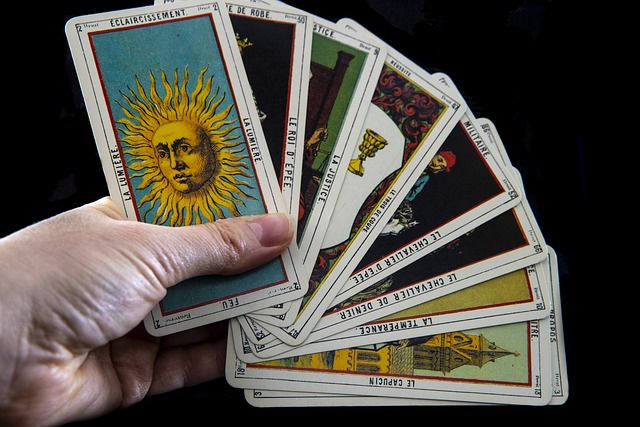
Lenormand Cards aren't esoteric, and they offer a more traditional cartomantic approach in fortune telling. These cards, which are based on the standard deck of playing cards, are easy to read and can be used in a variety of ways.
Lenormand consists of 36 cards. Each card bears a name. The deck's layout is such that it gives you a visual representation of a situation. Some cards are associated with planetary signs or zodiac sign. The cards are typically paired, with the central one reading like a sentence.
The Lenormand can be used with a Grand Tableau. This is a spread which usually contains three to five cards. The central card, also known as the focus card, will be chosen. The cards in the Grand Tableau are placed in a certain order, which provides a particular meaning. The cards that surround the focus card are known as anchor cards. These cards act as locators.

Conics can be created using the Lenormand. They are simple sentences containing a combination or cards. These conics usually use one card and a word association from the card. One example is the Ring card which might have a hula dancing performer. This symbolises agreements. A clover could be associated to the card, which represents luck. The meaning of the card varies depending on the deck and art of the card.
There are some similarities between The Lenormand and the Major Arcana of Tarot. However, it is a little more complex and uses more cards to achieve its effect. The decks are designed with images ranging from animals to flowers to court cards. An inset is a place where you can put a tree.
Lenormand is different from tarot card, which focus on psychological and emotional aspects of a scenario. Instead, it focuses more on the physical and environmental elements of the situation. For example, the Snake and Fish might be understood as symbols for water pipes within the house. The Whip-Child symbol may signify a small dispute.
Commonly, the Lenormand and the Tarot are confused. The Tarot is a method of reading that uses individual cards to describe the person or their inner emotions. It can also help you learn many things, like Karma. The Lenormand astrological reading method combines playing cards with everyday imagery.

Although the Lenormand may be easy to master, it can prove difficult for a beginner. It is best to practice before you attempt to master the Lenormand. It is important to practice by only reading one card at time. There are many online resources that can help you learn more about Lenormand. You might also find books that provide a comprehensive list of combinations. When you are looking for answers to your questions, the Lenormand can be a powerful tool.
FAQ
What's a hobby?
For kids, a hobby can be any activity that they are interested in doing as part of their everyday routine. Some kids like to build things, draw, paint, write, or play with toys.
Many parents are concerned that their children may get into trouble if allowed to do as they please. It is not true. Your child will not get into trouble if he or she is safe and doesn’t cause any harm to other people or themselves.
It's important for people to understand that just because they like something doesn't necessarily mean they'll choose it all the time. For example, if they love drawing pictures but they hate writing, then they may decide to draw pictures instead of writing.
There are lots of different types of hobbies out there, so it's really up to you to pick one that you enjoy most.
What are educational hobbies?
An educational hobby involves a sport or other activity where you can learn something from doing it. This could include anything from learning to play an instrument to playing sports.
You should have fun with it. You don't have to do it all the time, but if you find yourself getting bored, then you need to think about what else you could be doing instead.
These activities could end up costing you far more than what you pay for.
Is it possible make a living from a hobby?
Not necessarily.
But if your passion is to start a business, you might be able to make a lot of money.
Let's assume you like cooking. You enjoy healthy food so you opened a restaurant.
You serve only organic meals made from scratch and charge customers a small fee to cover the costs of ingredients and labor.
You can grow your clientele over time and eventually hire employees who will work alongside you.
You can eventually expand your menu to include vegan and gluten-free dishes.
In this scenario, you've created a successful business that has allowed you to live the type of lifestyle you wanted.
Of course, this doesn't mean you must give up your day job.
You could, instead, run your restaurant while also maintaining your regular 9-5 work schedule.
Statistics
- This 100% accurate personality-analyzing hobby quiz discovers your passion based on your characteristics. (quizexpo.com)
- In comparison, men in the “no humor” condition were refused 84.6% of the time and were only accepted 15.4% of the time. (time.com)
- 37% Video Games 36% Travel 36% Health and Fitness (quizexpo.com)
- Studies show that just six minutes of reading can reduce stress levels by 60 percent. (oberlo.com)
- Almost 80% of people claim to have no hobby. (hobbylark.com)
External Links
How To
How to get started gardening
Gardening is one the oldest forms. You need patience, perseverance, and determination. The first step to starting a garden is to pick a spot where you will grow food. This could be on a large piece of land or in your backyard. Next, decide what type of plants you want to grow. Do you prefer flowers or vegetables? Some people enjoy growing herbs and others prefer raising livestock like rabbits. You should consider how much space you have available before deciding what types of crops you plan to plant. If you live somewhere that has cold winters, it might be a good idea to grow berries or fruits.
After choosing what you want to plant you need to prepare your soil. How your plants perform is dependent on how well the soil you use. The soil should be rich in organic matter to provide nutrients for your plants' roots. Organic matter can include leaves, twigs and grass clippings as well as manure and compost. Once you have prepared your soil, you need to add nutrients. You will need different amounts of nutrients depending on which type of plants are being grown. A fertilizer calculator online can help you determine these values. Many fertilizers are on offer, so make sure that you know which one you are buying.
After preparing your soil and adding the proper nutrients, you now need to wait until your seeds germinate. This can take anywhere from two weeks to three months depending on where you live and how warm it is. After your seeds sprout, it is important to water them frequently. Watering your plants too little or too often can cause problems. You should ensure that your plants get enough water at regular intervals. Avoid overwatering. Overwatering your plants can lead to root disease and fungal infections. Keep in mind that plants are more thirsty during summer than winter. Keep in mind that certain plants may need to be dried after being watered. Tomatoes, for example, need to be kept moist but not too wet. They won't tolerate soggy soil. After flowers are finished, plants must go dormant. Dormancy is when plants stop producing new growth and begin storing energy for the next season's harvest. The plant ceases sending signals to its roots to produce food during dormancy. Plants continue to store energy throughout this period. However, the plant will die if temperatures drop below freezing or there is insufficient sunlight.
Urban environments may limit the variety of plants you can grow. Concrete sidewalks and roads, as well as parking lots, are common in urban areas. This blocks sunlight from reaching the ground. Concrete absorbs sunlight and blocks the soil below from receiving adequate sun exposure. Because of this lack of sunlight, many plants cannot survive in cities. There are many plants that can survive in urban environments. Many trees, shrubs, and perennials can adapt to city living. In addition, many annuals can be grown indoors in containers. You can bring greenery inside your home all year round, regardless of the weather.
Now that you have decided where to place your garden, chosen what you will grow, and prepared your soil, you are ready to plant!